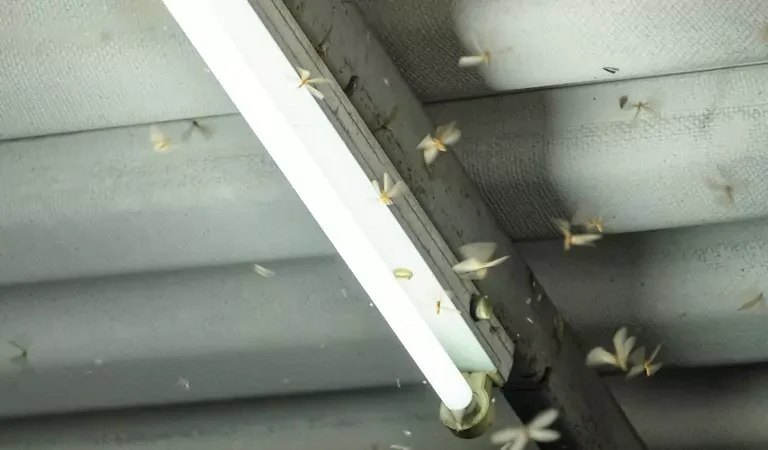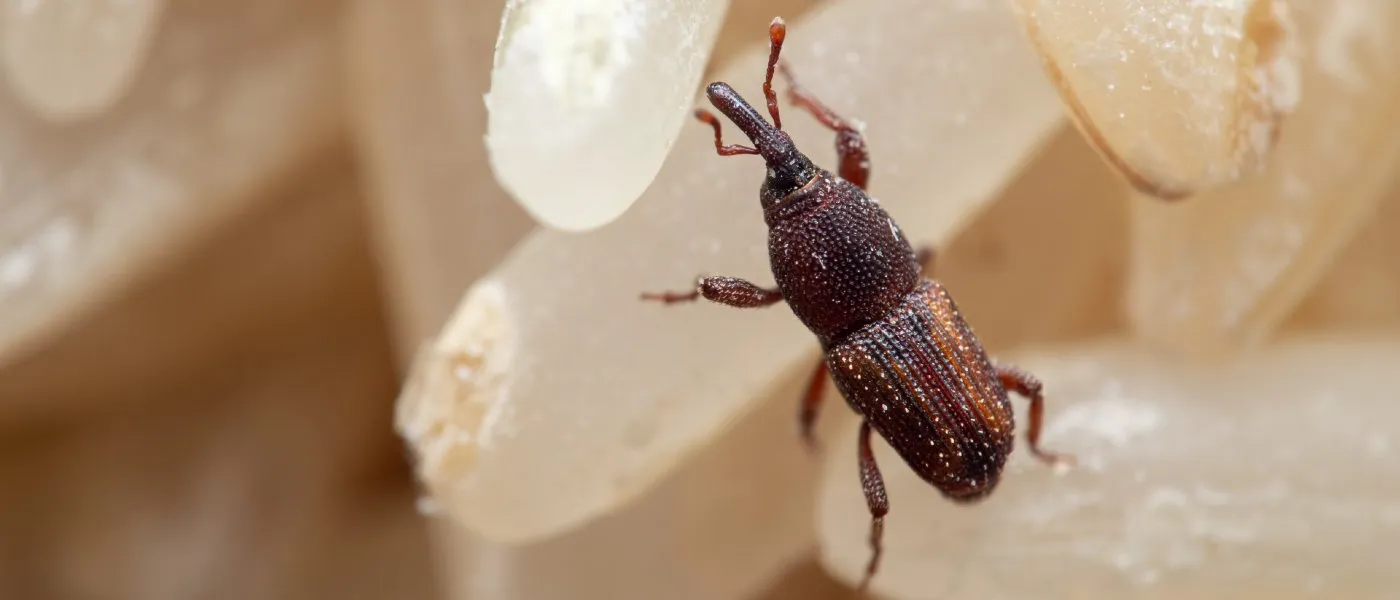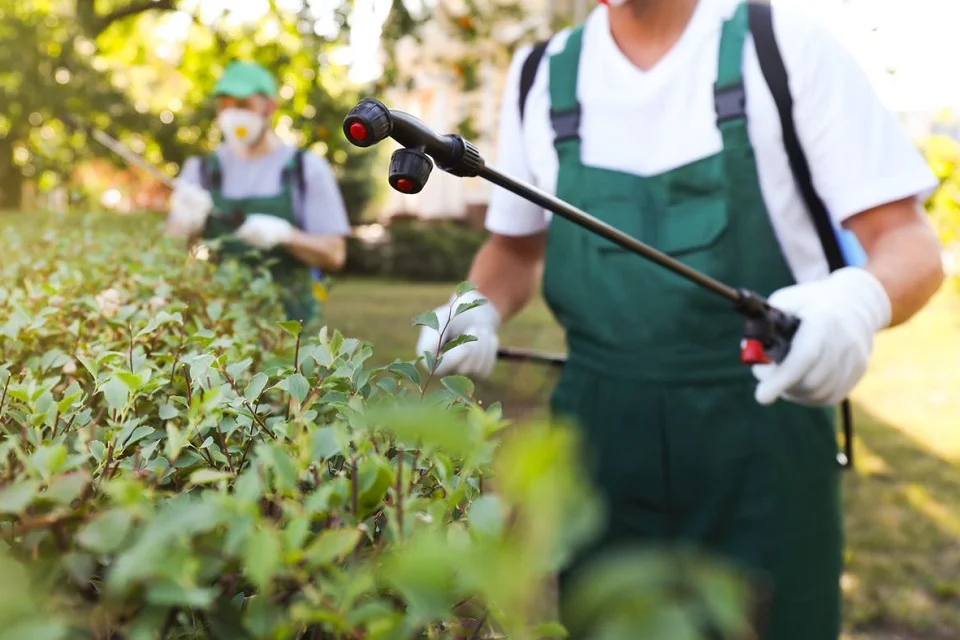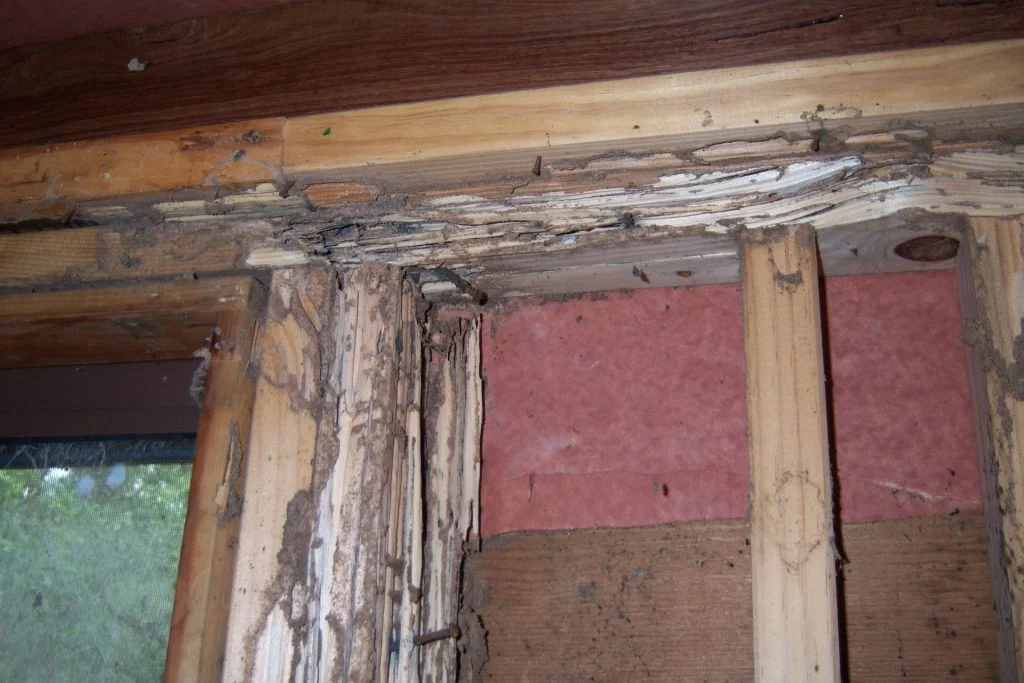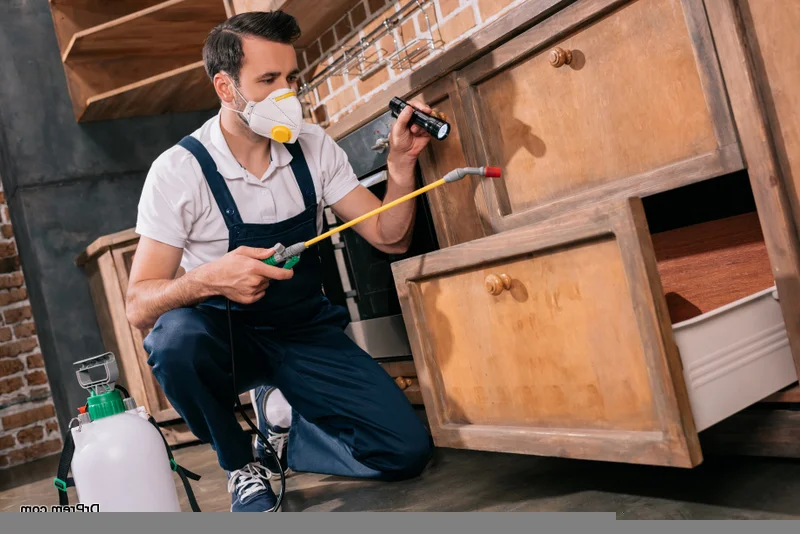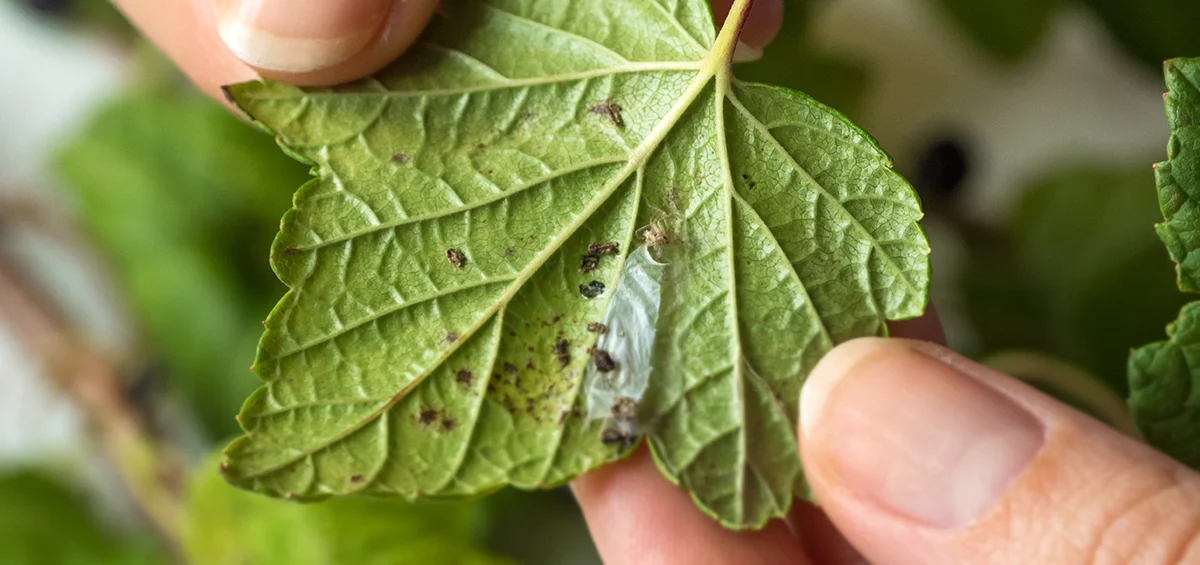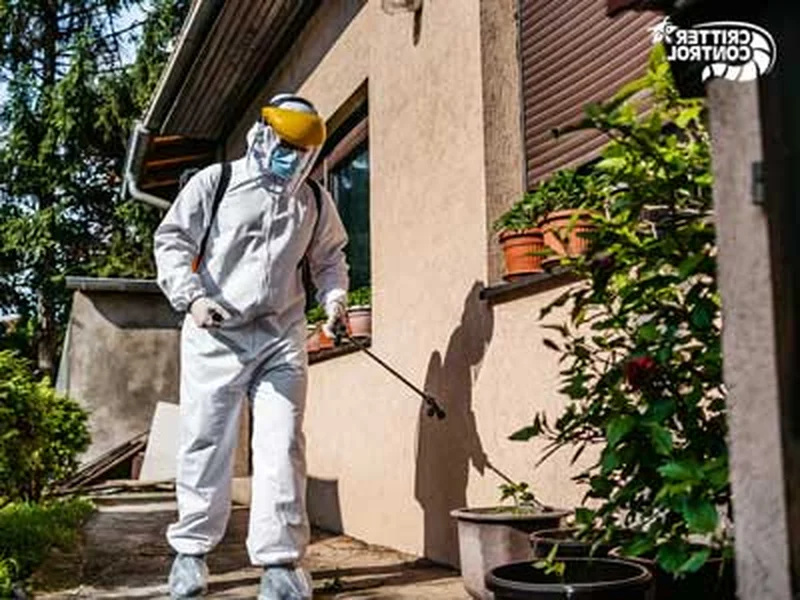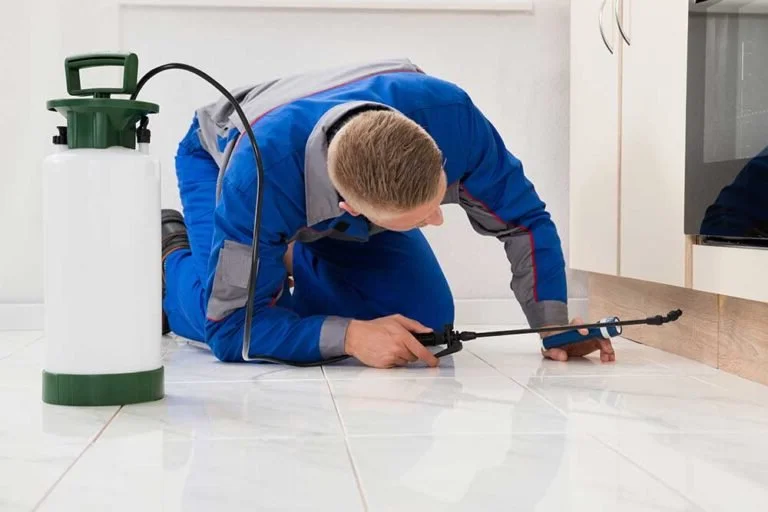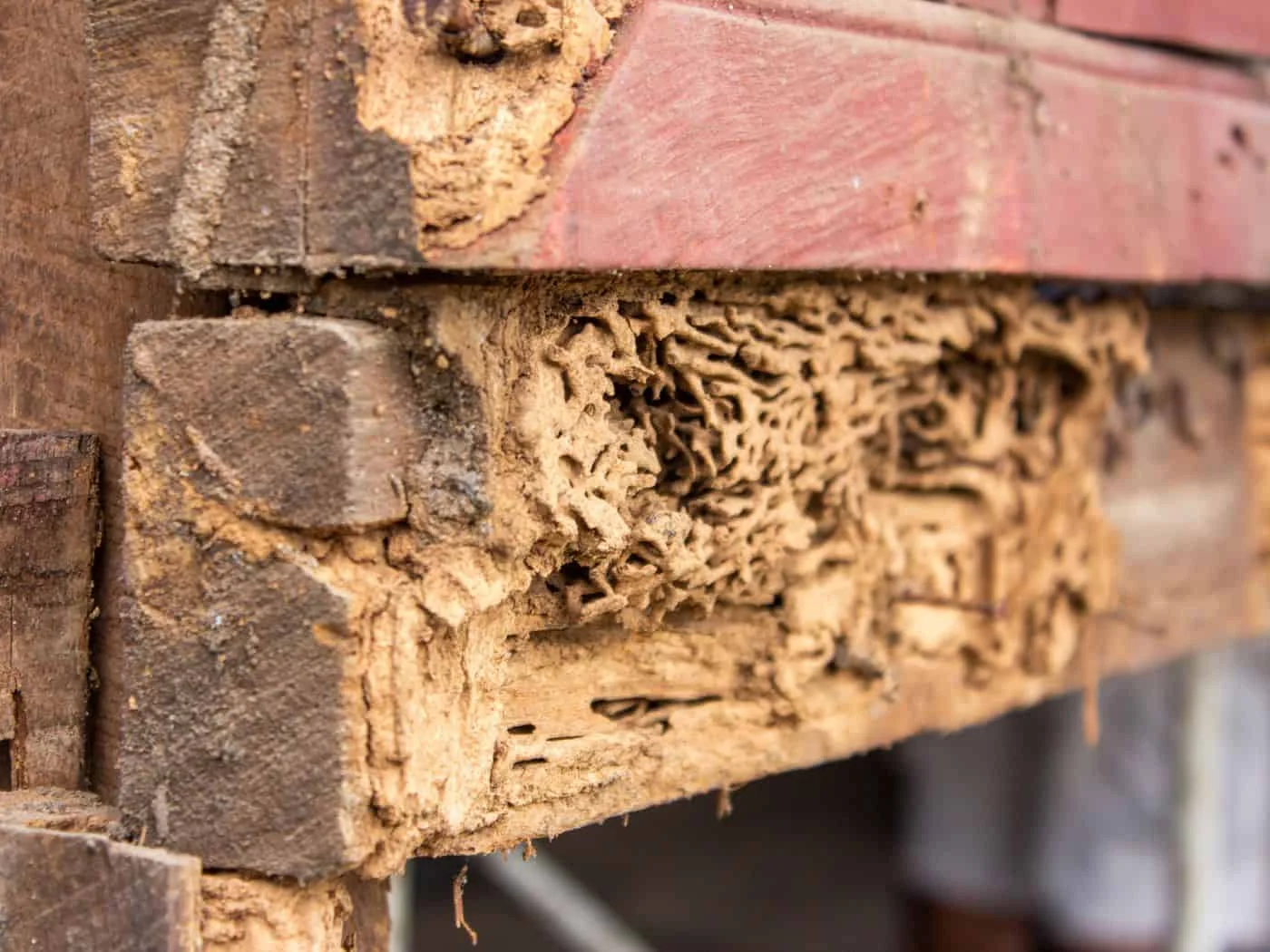Historic districts present extraordinary pest control challenges
that require balancing effective pest management with preservation of
irreplaceable architectural heritage and cultural significance. These
distinguished neighborhoods, featuring centuries-old buildings, traditional
construction materials, and unique architectural elements, demand specialized
approaches that protect both residents and invaluable historical assets.
From termites threatening century-old timber to rodents exploiting
historic building gaps, historic district pest control requires
expertise in both pest management and heritage preservation principles.
Successful heritage building pest management combines modern pest control
science with deep respect for historical integrity and preservation
requirements. Professional exterminators who specialize in historic
properties understand the unique materials, construction methods, and
regulatory considerations that govern work in designated historic districts.
In this comprehensive guide, we'll explore proven strategies for protecting
historic properties using eco-friendly pest solutions that maintain
the authenticity and cultural value of these irreplaceable architectural
treasures while ensuring safe, pest-free environments for modern residents
and visitors.
Protecting your historic property from pest damage while maintaining
heritage integrity? Our preservation specialists provide emergency pest control
24/7 and comprehensive
residential pest protection designed for historic buildings.
Get heritage-compliant solutions now!
Unique Pest Control Challenges in Historic Districts
Historic districts face distinctive pest management challenges that
combine the vulnerabilities of aged construction with strict preservation
requirements. Understanding these unique factors is essential for
effective historic district pest control:
-
Preservation compliance requirements All pest control activities
must comply with National Historic Preservation Act guidelines,
local landmark preservation ordinances, and heritage conservation
standards that protect historic building materials and architectural
features from alteration or damage.
-
Traditional construction vulnerabilities Historic buildings
feature traditional materials like lime mortar, original timber
framing, horsehair plaster, and hand-forged hardware that create
numerous pest entry points while requiring specialized treatment
approaches that don't damage irreplaceable elements.
-
Limited modification allowances Preservation restrictions
severely limit structural modifications, modern sealing techniques,
and building envelope improvements that would typically be used
for pest prevention in contemporary construction.
-
Aged building systems Original or period-appropriate plumbing,
electrical, and heating systems often create gaps, moisture issues,
and access points that facilitate pest entry while being protected
from modern retrofit solutions.
-
Material-specific pest attractions Historic materials including
original wood species, natural fiber insulation, and organic-based
mortars may be particularly attractive to specific pest species
like wood-boring insects and rodents.
-
Documentation and approval processes Any pest control work
may require approval from preservation authorities, architectural
review boards, and historic district commissions, creating timing
and procedural complexities for pest management activities.
These factors make specialized pest prevention strategies essential
for historic districts. Successful programs must achieve effective
pest control while maintaining absolute respect for historical integrity
and compliance with preservation standards that protect these irreplaceable
cultural resources.
Common Pests in Historic Buildings
Historic building environments support specific pest populations that
exploit both the aged construction materials and traditional building
methods. Understanding these heritage building pests is crucial for
developing preservation-compliant protection strategies:
Termites and Wood-Destroying Insects
Professional assessment of termite activity in historic timber framing
Subterranean termites and drywood termites pose the greatest threat
to historic buildings, attacking irreplaceable original timber
framing, flooring, and architectural millwork that cannot be easily
replaced. White ant infestation (termites) in historic
structures requires immediate professional intervention to prevent
catastrophic damage to centuries-old wooden elements.
Other wood-destroying insects including powder post beetles,
old house borers, and carpenter ants also threaten historic
wooden elements. These pests can cause extensive damage to original
timber framing, historic flooring, and period millwork that
represents irreplaceable craftsmanship and cultural heritage.
Rodents
Specialized rodent control in heritage building environment
House mice and Norway rats are persistent problems in historic
buildings, exploiting the numerous gaps and openings created
by settling foundations, aged mortar, and traditional construction
methods. These intelligent pests can cause significant damage
to original materials, insulation, and artifacts while creating
sanitation and health issues.
Pest control for rats in historic buildings requires
preservation-compliant approaches that eliminate rodent populations
without damaging original building materials or violating historic
preservation guidelines governing heritage property modifications.
Fabric and Paper Pests
Assessment of fabric pest damage in historic interior
Clothes moths, carpet beetles, silverfish, and book lice pose
serious threats to historic textiles, period furnishings, archival
materials, and museum collections housed in heritage buildings.
These specialized pests can cause irreparable damage to historic
artifacts, original wallpapers, period textiles, and priceless
documents.
Museums, historic houses, and heritage buildings with collections
require specialized monitoring and treatment approaches that
protect valuable artifacts while maintaining climate conditions
necessary for preservation of historic materials and collections.
Masonry and Structural Pests
Carpenter ants and other insects may exploit soft lime mortar, damaged
pointing, and moisture issues in historic masonry. While these pests
don't typically cause primary structural damage to masonry, they
can exacerbate existing moisture problems and compromise the integrity
of historic pointing and mortar systems.
Flying Insects
Historic buildings often attract flies, wasps, and other flying
insects through original window systems, foundation vents, and
architectural features that cannot be easily modified without
compromising historic integrity. Large historic windows and period
ventilation systems create numerous entry points.
Occasional Invaders
Spiders, centipedes, sowbugs, and other occasional invaders commonly
enter historic buildings through the numerous small gaps and openings
characteristic of traditional construction. While generally not
destructive, these pests can create comfort issues for residents
and visitors.
Urban Wildlife
Bats, pigeons, and squirrels often establish roosts or nests in
historic buildings, particularly in attic spaces, chimneys, and
architectural features like eaves and cupolas. These animals can
cause damage through droppings, nesting materials, and gnawing
activities.
Preservation-Compliant Pest Control Methods
Historic building pest management requires environmentally friendly pest control
methods that protect both heritage structures and their inhabitants
while complying with preservation standards. Professional approaches
emphasize minimal intervention, reversible treatments, and methods
that preserve the authenticity and integrity of historic materials
and architectural features.
Preservation-compliant pest control focuses on prevention, monitoring,
and targeted treatments that address pest problems without altering
or damaging the historic character-defining features that make
these buildings culturally and architecturally significant.
Minimal Intervention Approaches
-
Integrated Pest Management (IPM) Comprehensive prevention-focused
programs that minimize chemical use while maximizing effectiveness
through monitoring, exclusion, and environmental modification that
respects historic building integrity.
-
Reversible treatments Pest control methods that can be removed
or reversed without damaging historic materials, allowing for
future restoration work or changing preservation priorities.
-
Traditional material-compatible methods Treatment approaches
specifically designed for historic materials like lime mortar,
original timber species, and traditional plaster systems that
require specialized care.
-
Documentation and monitoring Comprehensive record-keeping
that tracks pest activity, treatment effectiveness, and any impacts
on historic materials to support ongoing preservation planning.
Historic Material Protection
| Historic Material |
Preservation Considerations |
Appropriate Treatment Methods |
| Original Timber Framing |
Irreplaceable structural elements requiring protection from
termites and wood-boring insects without chemical penetration.
|
Targeted baiting systems, monitoring stations, and localized
treatments that don't compromise timber integrity.
|
| Lime Mortar and Pointing |
Soft traditional mortar susceptible to damage from modern
sealants and incompatible chemical treatments.
|
Compatible sealers, traditional repair techniques, and
treatments that don't interfere with lime mortar chemistry.
|
| Historic Plaster |
Original horsehair plaster and period techniques requiring
protection from moisture and vibration damage.
|
Low-impact application methods and treatments that don't
require drilling or invasive installation techniques.
|
| Period Hardware |
Hand-forged and original hardware elements that cannot be
replaced and must be preserved in original condition.
|
Careful cleaning and protection protocols that maintain
original finishes and prevent corrosion damage.
|
| Historic Windows |
Original window systems with historic glass, sash, and
hardware requiring preservation-compliant weatherization.
|
Traditional weatherstripping and sealing methods that
improve pest exclusion without compromising historic character.
|
Heritage Building Protection Programs
Historic buildings require specialized protection programs that
combine expert termite inspection with comprehensive pest
management approaches designed specifically for heritage properties.
Professional programs address the unique vulnerabilities of historic
construction while maintaining compliance with preservation standards
and regulatory requirements.
Heritage building protection emphasizes preventive strategies,
early detection, and minimal-impact treatments that preserve
architectural integrity while providing effective pest control
throughout these irreplaceable structures.
Comprehensive Heritage Assessments
-
Historic building condition evaluation Professional assessment
of structural integrity, material condition, and pest vulnerabilities
specific to historic construction methods and traditional materials.
-
Preservation compliance review Evaluation of all proposed
pest control activities against applicable preservation standards,
landmark designations, and historic district guidelines.
-
Traditional material analysis Specialized knowledge of historic
building materials, construction techniques, and period-appropriate
maintenance practices that inform pest management strategies.
-
Cultural resource protection planning Coordination with
preservation professionals, historians, and cultural resource
specialists to ensure pest management supports overall heritage
conservation goals.
Preventive Heritage Maintenance
Prevention-focused programs emphasize traditional building maintenance
practices, appropriate material conservation, and environmental
management that reduces pest attraction while maintaining historic
authenticity and supporting long-term preservation objectives.
Emergency Heritage Response
Specialized emergency protocols address pest threats to irreplaceable
historic elements while coordinating with preservation authorities
and following expedited approval processes that protect cultural
resources during pest crises.
Museum and Historic Collection Protection
Specialized IPM services for historic house museum collections
Historic house museums, heritage sites, and buildings housing
valuable collections require specialized IPM technician house
services that protect both the building structure and priceless
artifacts. These environments demand museum-quality pest management
that prevents damage to irreplaceable collections while maintaining
the environmental conditions necessary for artifact preservation.
Professional collection protection combines building-wide pest
management with specialized collection care techniques, climate
control coordination, and conservation-quality monitoring that
meets museum standards for artifact protection and cultural
resource preservation.
Collection-Specific Pest Management
-
Textile and fabric protection Specialized monitoring and
treatment for clothes moths, carpet beetles, and other fabric
pests that threaten historic clothing, tapestries, and textile
collections.
-
Paper and document conservation Protection of archival
materials, historic books, and document collections from silverfish,
book lice, and other pests that consume paper and organic materials.
-
Wooden artifact preservation Monitoring and treatment for
wood-boring insects that threaten furniture, sculptures, and
wooden artifacts in historic collections.
-
Environmental monitoring integration Coordination of pest
management with climate control systems that maintain optimal
temperature and humidity for both pest prevention and artifact
preservation.
Museum Standards Compliance
All pest management activities comply with museum professional standards,
conservation ethics, and collection care best practices that prioritize
long-term preservation of cultural artifacts and historic materials
over immediate convenience or cost considerations.
Visitor Safety Coordination
Pest management programs coordinate with public access requirements,
visitor safety protocols, and educational programming to ensure
that pest control activities support rather than interfere with
the public interpretation and cultural education missions of historic
sites.
Protect your irreplaceable historic property with preservation-compliant
pest management. From heritage building assessments to museum-quality
collection protection, our specialists provide residential pest protection
that preserves history – schedule your heritage assessment today!
Historic Preservation Compliance and Approvals
Historic district pest control requires navigating complex regulatory
frameworks that govern work in designated heritage areas. Professional pest control service
providers specializing in historic properties understand the
approval processes, documentation requirements, and compliance
standards that apply to pest management activities in protected
historic buildings and districts.
Professional compliance support ensures that all pest control
activities meet preservation standards while providing effective
protection for both historic buildings and their occupants throughout
the regulatory approval and implementation process.
Regulatory Framework Navigation
-
National Historic Preservation Act compliance Ensuring
all pest control activities comply with federal preservation
standards and Section 106 review processes for federally-funded
or federally-licensed projects.
-
Local landmark designation requirements Compliance with
municipal landmark preservation ordinances, historic district
guidelines, and local preservation commission approval processes.
-
State Historic Preservation Office coordination Working
with SHPO representatives and state preservation professionals
to ensure pest management activities support statewide preservation
goals and standards.
-
Architectural review board approvals Obtaining necessary
approvals from design review boards and preservation committees
that oversee exterior and interior modifications in historic districts.
Documentation and Record-Keeping
Comprehensive documentation supports preservation compliance by
providing detailed records of pest management activities, treatment
rationales, and impacts on historic materials that satisfy regulatory
requirements and support ongoing preservation planning efforts.
Professional Preservation Coordination
Pest management services coordinate with preservation architects,
conservation specialists, and cultural resource professionals to
ensure integrated approaches that support overall building preservation
goals while addressing immediate pest control needs.
Traditional Methods and Compatible Materials
Historic building pest management often benefits from natural pest solutions
and traditional methods that align with historic construction
materials and preservation principles. These approaches emphasize
compatibility with traditional building systems while providing
effective pest control that doesn't compromise historic authenticity
or cultural significance.
Traditional and natural pest management methods work particularly
well in historic environments where modern synthetic treatments
may be incompatible with historic materials or prohibited by
preservation guidelines that govern heritage property maintenance
and conservation.
Historic-Compatible Treatment Methods
-
Traditional exclusion techniques Time-tested methods for
sealing openings and preventing pest entry using materials and
techniques that complement historic construction methods and
aesthetic requirements.
-
Natural and botanical treatments Plant-based pest control
products and traditional pest deterrents that work effectively
in historic environments without damaging sensitive materials
or historic finishes.
-
Physical barriers and mechanical controls Non-chemical
pest management approaches including traps, barriers, and mechanical
exclusion devices that provide effective control without chemical
applications.
-
Environmental modification Traditional building maintenance
practices including proper ventilation, moisture control, and
sanitation that reduce pest attraction using historically-appropriate
methods.
Compatible Material Selection
When materials are required for pest control applications, professional
services select products that are chemically compatible with historic
materials, visually appropriate for the historic setting, and capable
of being removed or reversed without damaging original building elements.
Traditional Maintenance Integration
Pest control activities integrate with traditional building maintenance
practices including lime mortar repointing, traditional window restoration,
and period-appropriate weatherization that enhance pest prevention
while supporting overall preservation objectives.
Emergency Response for Historic Properties
Historic properties facing pest emergencies require specialized
response capabilities that address immediate threats while maintaining
preservation compliance and cultural resource protection. Emergency pest control visit
services for heritage buildings include rapid assessment, preservation-compliant
treatments, and coordination with preservation authorities during
crisis situations.
Emergency protocols for historic properties balance the urgency
of pest threats against preservation requirements, ensuring that
immediate response activities protect both building occupants
and irreplaceable cultural resources throughout the emergency
intervention process.
Heritage Emergency Protocols
-
Preservation authority coordination Immediate notification
and coordination with preservation professionals, regulatory authorities,
and cultural resource specialists during emergency pest situations.
-
Cultural resource protection Emergency response procedures
that prioritize protection of irreplaceable historic elements
and cultural artifacts during immediate pest control interventions.
-
Expedited approval processes Understanding of emergency
procedures for obtaining necessary approvals and permits for urgent
pest control work in regulated historic properties.
-
Damage limitation strategies Emergency treatments designed
to address immediate pest threats while minimizing any potential
impact on historic materials and architectural features.
Common Heritage Emergencies
Typical emergency situations in historic properties include termite
swarms threatening structural timber, rodent infestations damaging
collections or historic materials, fabric pest outbreaks affecting
museum textiles, and any pest situation that poses immediate threats
to irreplaceable cultural resources or building safety.
Post-Emergency Documentation
Emergency response includes comprehensive documentation of all activities,
impacts on historic materials, and recommendations for follow-up
treatments that support regulatory compliance and ongoing preservation
planning for the affected heritage property.
Seasonal Management for Historic Properties
Spring (March-May)
- Termite swarms require immediate monitoring
- Historic foundation inspection after winter
- Traditional spring cleaning and maintenance
- Collection climate transition management
Focus: Comprehensive assessment and preventive
maintenance using traditional methods and preservation-compliant approaches.
Summer (June-August)
- Peak visitor season pest management
- Climate control and pest pressure coordination
- Traditional ventilation system optimization
- Collection and artifact monitoring intensifies
Focus: Visitor-safe pest management and collection
protection during peak museum and tourism seasons.
Fall (September-November)
- Pest migration prevention using traditional methods
- Historic window and door weatherization
- Heating system preparation and pest exclusion
- Collection winterization and protection
Focus: Traditional weatherization and exclusion
work that preserves historic character while preventing pest entry.
Winter (December-February)
- Interior monitoring in heated historic spaces
- Traditional heating system pest management
- Collection climate stability and pest prevention
- Planning for spring preservation activities
Focus: Interior monitoring and collection protection
while maintaining historic building environmental conditions.
Cultural Resource and Artifact Protection
Professional assessment of pest threats to historic collections
Historic buildings often house irreplaceable cultural resources
including period furnishings, archival materials, artwork, and
artifacts that require specialized protection from pest damage.
Home pest inspection techniques adapted for heritage environments
include detailed assessment of collection areas, artifact storage
spaces, and environmental conditions that affect both pest activity
and cultural resource preservation.
Professional cultural resource protection combines pest management
expertise with conservation knowledge to develop comprehensive
strategies that preserve both the building structure and the
invaluable contents that contribute to its historical significance
and cultural value.
Artifact-Specific Protection Strategies
-
Textile and fabric conservation Specialized monitoring and
treatment for historic clothing, tapestries, upholstery, and textile
artifacts that are vulnerable to clothes moths and carpet beetles.
-
Paper and archival material protection Conservation-quality
pest management for documents, books, photographs, and archival
collections that require protection from silverfish and other
paper-consuming pests.
-
Wooden artifact preservation Targeted protection for historic
furniture, sculptures, musical instruments, and wooden artifacts
that may be threatened by wood-boring insects.
-
Metal artifact corrosion prevention Environmental management
that prevents pest-related moisture problems that could accelerate
corrosion of historic metal objects and hardware.
Conservation Environment Coordination
Pest management activities coordinate with conservation climate control
requirements, ensuring that pest prevention measures support rather
than compromise the environmental conditions necessary for long-term
preservation of cultural artifacts and historic materials.
Collection Security Integration
Pest monitoring systems integrate with collection security measures
to provide comprehensive protection for valuable cultural resources
while maintaining appropriate access for research, education, and
public interpretation activities.
Historic District Community Coordination
Historic districts benefit from coordinated pest management approaches
that address area-wide pest pressure while maintaining the architectural
integrity and cultural character that define these special places.
Community-wide coordination supports individual property protection
while preserving the historic district's overall significance and appeal.
District-Wide Pest Management
-
Coordinated preservation standards District-wide pest management
policies that ensure all treatments comply with historic preservation
guidelines and maintain consistent standards throughout the community.
-
Shared resource protection Coordinated approaches to protecting
shared cultural resources, public spaces, and community assets
that contribute to the district's historic significance.
-
Tourism and visitor coordination Pest management that supports
the district's tourism and economic development goals while protecting
historic resources and maintaining community livability.
-
Property owner education Community education programs that
help historic property owners understand preservation-compliant
pest management options and available resources for heritage building
maintenance.
Preservation Authority Coordination
District-wide pest management coordinates with local preservation
commissions, historic district management entities, and cultural
resource professionals to ensure that individual pest control activities
support overall district preservation goals and cultural resource
protection objectives.
Community Heritage Stewardship
Coordinated pest management supports community heritage stewardship
by maintaining the historic district's physical integrity, cultural
authenticity, and economic vitality that depend on effective preservation
of the area's irreplaceable historic resources.
Professional Heritage Pest Management Expertise
Effective historic district pest management requires specialized
exterminator business expertise that combines pest control
science with preservation knowledge, cultural resource understanding,
and regulatory compliance experience. Professional heritage pest
management specialists provide the unique combination of skills
necessary to protect both building occupants and irreplaceable
cultural resources.
Heritage pest management professionals understand the complex
balance between effective pest control and preservation requirements,
providing expert guidance that supports both immediate pest management
needs and long-term heritage conservation objectives throughout
historic districts and individual heritage properties.
Specialized Professional Qualifications
-
Preservation training and certification Professional development
in historic preservation principles, traditional building materials,
and cultural resource protection that informs pest management
approaches in heritage environments.
-
Traditional material expertise Specialized knowledge of historic
construction materials, traditional building techniques, and period-appropriate
maintenance practices that affect pest management strategies.
-
Regulatory compliance experience Understanding of historic
preservation regulations, approval processes, and documentation
requirements that govern work in protected historic properties.
-
Conservation professional coordination Experience working
with preservation architects, conservators, museum professionals,
and cultural resource specialists in multidisciplinary heritage
preservation teams.
Continuing Education and Development
Heritage pest management professionals maintain current knowledge
through ongoing education in preservation techniques, emerging conservation
technologies, and evolving regulatory requirements that affect pest
management work in historic properties and cultural institutions.
Professional Network Coordination
Heritage pest management specialists maintain professional relationships
with preservation architects, conservators, museum professionals,
and regulatory authorities to provide comprehensive support for complex
heritage preservation projects and cultural resource protection initiatives.
Historic District Success Stories
"PestControl100's heritage specialists saved our 18th-century home
from termite damage while maintaining full preservation compliance.
Their understanding of historic materials and traditional methods
made all the difference for our National Register property."
- Margaret and Robert H., Historic Homeowners
★★★★★
"The museum-quality pest management program protects our historic
house collection while maintaining the environmental conditions
necessary for artifact preservation. Their expertise in both pest
control and conservation is invaluable."
- Dr. Sarah M., Museum Director
★★★★★
"As preservation consultants, we appreciate working with pest
control professionals who understand historic preservation requirements
and can provide effective solutions that comply with Secretary
of Interior Standards."
- James L., Preservation Architect
★★★★★
Protecting Historic Property Investment and Value
Historic properties represent significant financial and cultural
investments that require specialized protection from pest damage
that could compromise both their market value and historical
significance. Prevention of termite damage and other pest-related
deterioration is essential for maintaining the integrity and
value of these irreplaceable cultural assets.
Professional pest management helps protect historic property
investments by preventing damage to irreplaceable elements,
maintaining preservation compliance that supports tax incentives
and grants, and preserving the historic integrity that determines
both cultural and financial value.
Financial Protection Strategies
-
Irreplaceable element preservation Protection of original
architectural features, historic materials, and character-defining
elements that cannot be replaced and directly impact property
value and historical significance.
-
Tax incentive compliance support Maintaining preservation
standards required for historic tax credits, preservation easements,
and other financial incentives available to historic property owners.
-
Insurance and liability protection Documentation and preventive
maintenance that supports insurance coverage and provides protection
against claims related to pest damage or negligent heritage stewardship.
-
Grant and funding support Maintaining property conditions
and documentation standards that support eligibility for preservation
grants and heritage conservation funding opportunities.
Cultural Value Preservation
Beyond financial considerations, professional pest management protects
the cultural and historical value that makes these properties significant
to communities, researchers, and future generations who depend on
authentic historic resources for education and cultural understanding.
Long-Term Stewardship Support
Comprehensive pest management supports long-term heritage stewardship
by preventing damage that could compromise the property's ability
to tell its historic story and contribute to community identity
and cultural heritage preservation goals.
Frequently Asked Questions
How does pest control work differently in historic buildings compared to modern construction?
Historic building pest control faces unique challenges including
preservation compliance requirements that limit modification
options, traditional materials that may be vulnerable to specific
pests, aged construction that creates numerous entry points,
and regulatory approval processes for any treatment activities.
Professional approaches emphasize minimal intervention, reversible
treatments, and methods that preserve historic integrity while
providing effective pest control using preservation-compliant
techniques and materials.
Do I need special approvals for pest control work in a designated historic district?
Yes, pest control work in designated historic districts often
requires approvals from local preservation commissions, architectural
review boards, or historic district authorities, especially
for exterior work or structural modifications. Professional
heritage pest management services understand these approval
processes and can help navigate regulatory requirements while
ensuring that pest control activities comply with preservation
standards and maintain the property's historic designation benefits.
Are modern pest control chemicals safe for historic building materials?
Not all modern pest control products are compatible with historic
materials like lime mortar, original timber, or traditional
plaster systems. Professional heritage pest management specialists
select products and methods specifically tested for compatibility
with historic materials and preservation requirements. Many
historic building pest control programs emphasize natural, traditional,
and mechanical methods that provide effective control without
risking damage to irreplaceable historic elements.
How do you protect historic collections and artifacts from pest damage?
Historic collection protection requires museum-quality pest
management that combines environmental monitoring, specialized
detection methods, and conservation-appropriate treatments.
This includes climate control coordination, textile and paper
pest monitoring, collection storage protection, and emergency
response protocols designed specifically for cultural artifacts.
All treatments follow conservation ethics and museum standards
that prioritize long-term preservation of irreplaceable cultural
resources.
What makes termite control especially challenging in historic buildings?
Historic buildings often contain irreplaceable original timber
framing, flooring, and architectural millwork that cannot be
easily replaced if damaged by termites. Traditional construction
methods may create vulnerabilities while preservation restrictions
limit modern treatment options like soil barriers or structural
modifications. Professional heritage termite management uses
targeted monitoring, preservation-compliant baiting systems,
and traditional building maintenance practices that protect
original wooden elements without compromising historic integrity.
Preserve your irreplaceable historic legacy with specialized heritage
pest management. Trust PestControl100 for preservation-compliant
historic district pest control that protects both your property
and its cultural significance – contact us today
for expert heritage protection!

